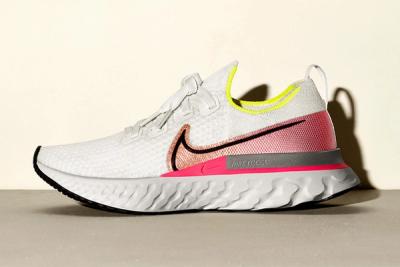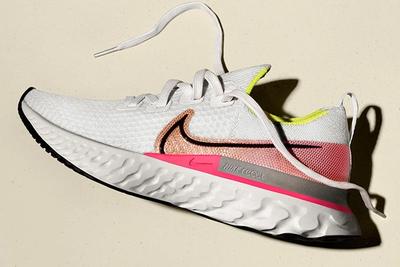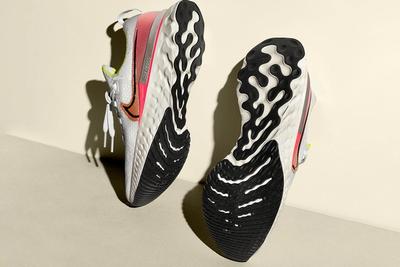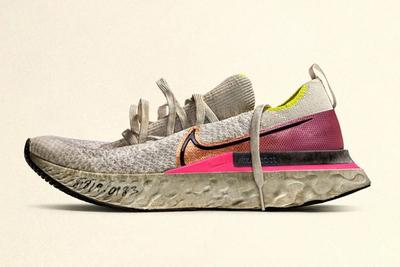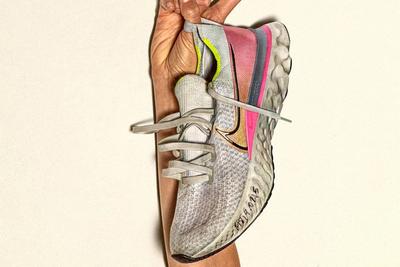Nike's Designers Discuss the Injury-Preventing React Infinity Run
'Imagine a world where every runner gets faster. Pretty exciting. But also a hearty challenge, given the presumed hurdle of injury. But are injuries actually inevitable?'
That was the question that led to create their latest React runner: the React Infinity Run. According to the Swoosh, the design incorporates the best qualities of the and the brand's energy-returning React foam to create a shoe 'that offers a more democratic solution to stability, and an advance from traditional motion-control designs'.
The rocker-like midsole has been widened for a more stable ride, while a lengthy external heel counter provides further stability. Ultimately, the React Infinity Run helps to guide the foot in a smooth, straight line, and reduces wobbly side-to-side movement. An external study by the British Columbia Sports Medicine Research Foundation (BCSMRF) even showed that runners wearing the shoe saw a 52 per cent lower injury rate than those wearing the Structure 22, a more traditional motion control design.

To delve a little deeper into the game-changing tech, we got in touch with the team behind it: Matthew Nurse, VP, Nike Explore Team (NXT) Sport Research Lab; Brett Holts, VP, Nike Running Footwear; and Jay Worobets, Footwear Research Director, Nike Sport Research Lab. Here's what they had to say:
This is really going to be an evolution of the Epic React with our most complete foam to date, meaning it has all those inherent benefits and the properties of the OG cushioning with properties runners are asking for. What it does is blends that cushioning with an incredibly lightweight package, so you're no longer compromising one for the other.
We're getting you taller off the ground. So we're still at a 9mm offset in this product, but our stack heights in the heel are 33mm, with 24mm in the forefoot. This takes you higher off the ground to get you more of a pushing benefit.
We conducted a 12-week running injury study with 226 athletes – both male and female, but that was skewed more towards more female participants. They were training for a half marathon event, and so they were doing a 12 weeks of variable training including long runs, intervals and temple runs.
Half the subjects were wearing the Nike Infinity Reacts and the other half the subjects were wearing the Nike Air Zoom Structure 22. What we effectively wanted to do was create the experiments of controlling motion or this new idea of prioritising cushioning, which is what the athletes have been telling us. We defined the injury as missing three consecutive runs. So if you're experiencing pain and you miss three consecutive runs due to some regulated pain – that was the definition of injury.
At the end of the day what we found is that the React infinity reduced running-related injuries by 52 per cent compared to the Structure, which is a big result.
The shoe is one component, but we want to equip people with the solution. Another really critical part of this is going to be the education and the guidance. Runners often don't need as much guidance or education, but those that don't even consider themselves to be runners are a bit intimidated by our sport – even intimidated by just how to get out there. We want them to get started and have a positive experience through the guidance. The service component is going to be equally, if not even more important than the product solution.
The shoe will debut for on January 3, 2020 before officially launching two weeks later on January 1.
